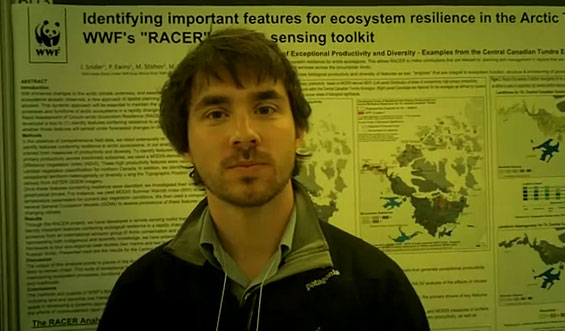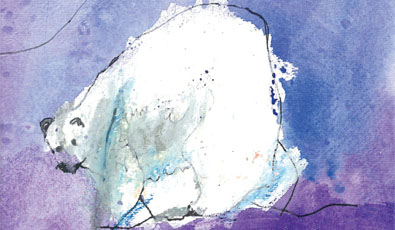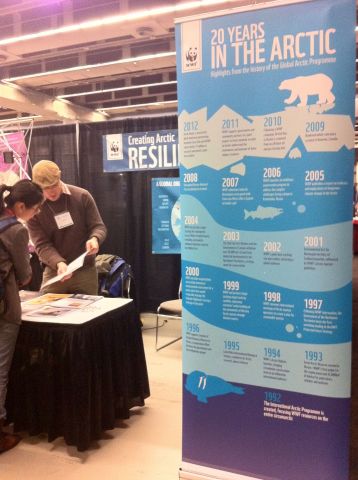
© WWF Russia / Tatiana Minenko
Despite temperatures well below freezing, Cape Kozhevnikov is bustling. The
Umky Patrol is hard at work in this Russian Arctic nature reserve, using tractors and snowmobiles to transport frozen walrus carcasses and pile them at a distance from the nearby village of Ryrkaypy. The result is a “polar bear dining room” that keeps both bears and villagers safe from conflict.
“Umky” means “polar bear” in the local Chukchi language, and the the Umky Patrol works to ensure the safety of people living near polar bears, preserve walrus haul-outs and other unique places, and to help local people participate in scientific research on polar bears and other animals. The Patrol was developed in 2006 by WWF and the people of Vankarem, a village on the Arctic shores of Chukotka, Russia. Today, patrols flourish in Russia, Canada and the United States.
Two hungry bears have already visited the village this month, and the Patrol had to encourage these uninvited guests to leave town — a stressful experience for both bears and people. So with support from WWF, the Patrol has rented equipment to create a “bear dining room” away from the village. Villagers hope the bears will be less hungry, and less inclined to look for a meal in the village — a positive outcome for all.
“We must try to protect each bear”, said Tatiana Minenko, Umky Patrol coordinator in Ryrkaypy. “Just a kilometer away from the village, with the active support of WWF and local people Cape Kozhevnikov nature monument was created. Thousands of Pacific walruses rest here each autumn. Now we are here to help polar bears. ”
Original article on WWF.ru (in Russian)
More about the Umky Patrol:







